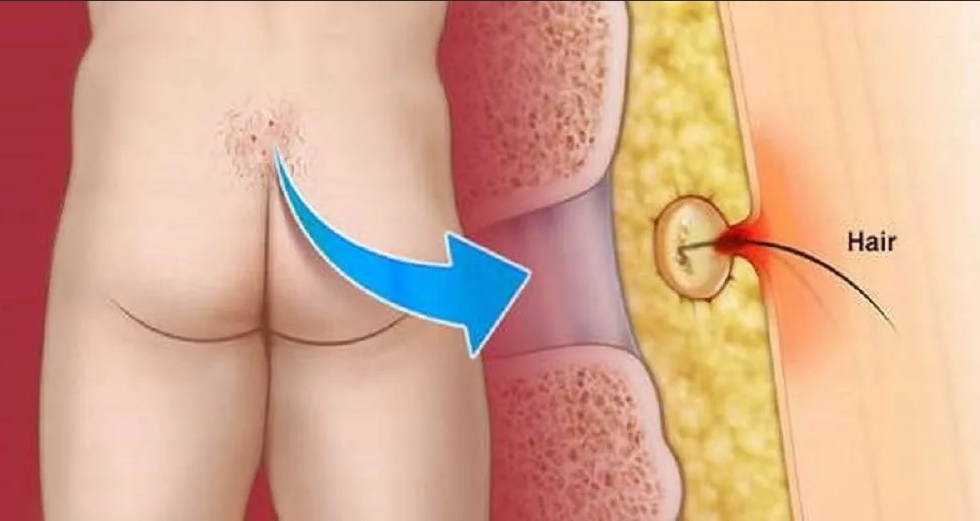What's in this article?
Cyst and Sinus Background
A pilonidal sinus (PNS) is a small cyst or abscess that occurs in the cleft at the top of the buttocks. It can cause severe pain and often becomes infected. If it becomes infected, it may exude pus and blood and emit a foul smell.
A pilonidal sinus is a condition that mostly affects men and is common in young adults.
A pilonidal sinus is an infected tract under the skin between the buttocks. Treatment commonly involves an operation. After the operation you should keep the area free of growing hair by regular shaving or other means of hair removal.
What is a pilonidal sinus?
- Pilonidal means a ‘nest of hairs’.
- A sinus tract is a narrow tunnel (a small abnormal channel) in the body. A sinus tract typically goes between a focus of infection in deeper tissues to the skin surface. This means that the tract may discharge pus from time to time on to the skin.
A pilonidal sinus is a sinus tract which commonly contains hairs. It occurs under the skin between the buttocks (the natal cleft) a short distance above the back passage (anus). The sinus track goes in a vertical direction between the buttocks. Rarely, a pilonidal sinus occurs in other sites of the body.
What causes a pilonidal sinus?
The exact cause is not clear. There are various theories. For example, one theory is that the problem may develop from a minor abnormality, which you were born with, in the skin between the buttocks. This may explain why the condition tends to run in some families. Part of the abnormality in this part of the skin may be that the hairs grow into the skin rather than outwards.
Another theory is that you develop skin dimples (skin pits) in the skin between the buttocks. These may develop as a result of local pressure or friction causing damage to the small structures below the skin which are responsible for making hairs (the hair follicles). Because of local pressure, growing hair in the natal cleft may get pushed into the skin pits.
Whatever the cause, once hair fragments become ‘stuck’ in the skin they irritate it and cause inflammation. Inflamed skin quickly becomes infected and so a recurring or persistent infection tends to develop in the affected area. The infection causes the sinus to develop which often contains broken pieces of hair.
(A similar condition can occur between the fingers of hairdressers caused by customers’ hair entering moist, damaged skin.)
What Causes Pilonidal Sinus to Inflame? ← Read more
Who gets pilonidal sinus?
This condition affects around 26 in 100,000 people each year in the UK. It is rare in children and in people over the age of 40. It is four times more common in men (as they are hairier than women).
Certain factors increase the risk of developing the condition and include:
- A job involving a lot of sitting (a sedentary occupation)
- Being overweight (obesity)
- A previous persistent irritation or injury to the affected area
- Having a hairy, deep natal cleft
- A family history of the condition
This condition used to be called ‘jeep seat’, as it was common in army jeep drivers. This was probably a result of many hours driving and ‘bouncing’ on a hard seat, which caused irritation, minor injury and pressure around the natal cleft.
What are the symptoms of pilonidal sinus?
A pilonidal sinus may not cause any symptoms at first. You may not be aware that you have one. Some people notice a painless lump at first in the affected area when washing. However, in most cases, symptoms develop at some stage and can be ‘acute’ or ‘chronic’.







